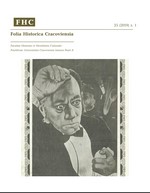The Legend of Saint Kinga’s Ring: A Comparative Analysis of the Sources
The Legend of Saint Kinga’s Ring: A Comparative Analysis of the Sources
Author(s): Matuesz GilSubject(s): Comparative history, Local History / Microhistory, 13th to 14th Centuries
Published by: Wydawnictwo Naukowe Uniwersytetu Papieskiego Jana Pawła II w Krakowie
Keywords: St Kinga; Cracow salt mines; rock salt; ring;
Summary/Abstract: The author has carried out a comparative analysis of sources pertaining to the legend of Kinga’s ring. Kinga was the daughter of Hungarian King Bela IV, and she wed Boleslaus the Chaste (Bolesław Wstydliwy), Duke of Cracow and Sandomierz. According to a life of the duchess written by an anonymous hagiographer in 1317–1329, she journeyed to Hungary and asked her father to bestow a salt mine upon her. After her request was granted, Kinga cast a gold ring into the mine, and sometime later it was found in a block of salt that came from the first pit (fovea) to be mined in Bochnia (Poland). Certain scholars have detected in this legend echoes of actual events, duly ascribing mining specialists from Hungary a key role in the development of salt mining in Poland (Adam Naruszewicz, Karol Szajnocha, Hieronim Łabęcki, Franciszek Skibiński, and also several Hungarian historians). Even Józef Piotrowicz, who emphatically rejected such an interpretation of the legend, reflected that there was ‘a grain of truth in it’. The collation of passages that refer to the oldest hagiographic tradition about this Hungarian princess has enabled the author of this study to clarify the relations among the works containing these references (Traska’s Annals, The Chronicle of Dzierzwa, The Chronicle of Greater Poland, The Life and Miracles of Duchess Kinga). However, above all, this undertaking allowed the author to establish the milieu which contributed to the dissemination of the legend, namely the Franciscans of southern Poland, most probably the Poor Clares of Stary Sącz. Aided by these religious communities, the hagiographer explained how deposits of rock salt appeared near Cracow, whereas the fact of the actual establishment of the Bochnia was only of secondary importance to him. Kinga symbolically married salt for the good of her adopted homeland, thanks to which salt deposits miraculously appeared near Cracow, having multiplied in a characteristic manner. It was only Late Medieval and Early Modern writers who started to interpret the legend in a different way, stressing that the wife of Boleslaus the Chaste contributed to the mining of the first pit at Bochnia.
Journal: Folia Historica Cracoviensia
- Issue Year: 25/2019
- Issue No: 1
- Page Range: 9-36
- Page Count: 28
- Language: English

